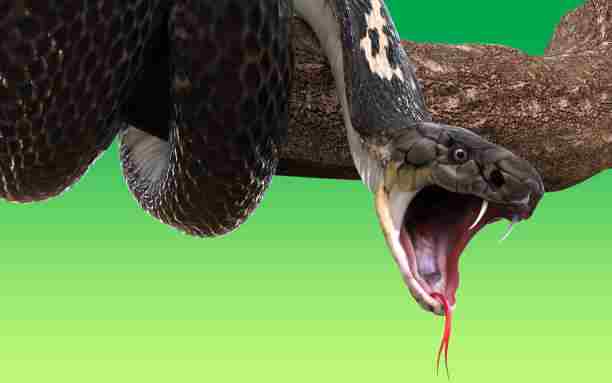In the realm of adorable and amusing animal behavior, there’s something irresistibly charming about animals sticking their tongues out. From domestic pets to wild creatures, this endearing gesture often accompanies playfulness, curiosity, or a touch of irreverence. The sight of a dog with its tongue lolling out or a giraffe displaying its lengthy tongue becomes a universal symbol of innocence and joy.
This article delves into the delightful world of Animals that Stick Their Tongues Out and their playful tongue antics, capturing candid moments that warm our hearts and bring a smile to our faces. Through a collection of captivating images and heartwarming tales, we unravel the stories behind this playful expression, showcasing the diverse and adorable ways in which the animal kingdom sticks its tongues out, reminding us of the simple and unbridled happiness found in their presence.
Table of Contents
Tongues in the Animal Kingdom:
Tongues are versatile and fascinating tools in the repertoire of the animal kingdom. This multifaceted organ serves various crucial functions across different species. In many animals, tongues are vital for tasks like grooming, feeding, and manipulating objects. For instance, chameleons utilize their tongues with exceptional precision to capture prey, swiftly extending and retracting them to snatch insects.
Meanwhile, anteaters employ their elongated, sticky tongues to consume ants and termites from anthills. The remarkable diversity in tongue structure and function across the animal kingdom offers a glimpse into the evolutionary adaptations that have honed this organ into an indispensable tool for survival and interaction within specific ecosystems.
List Of Animals That Stick Their Tongues Out
Chameleons:
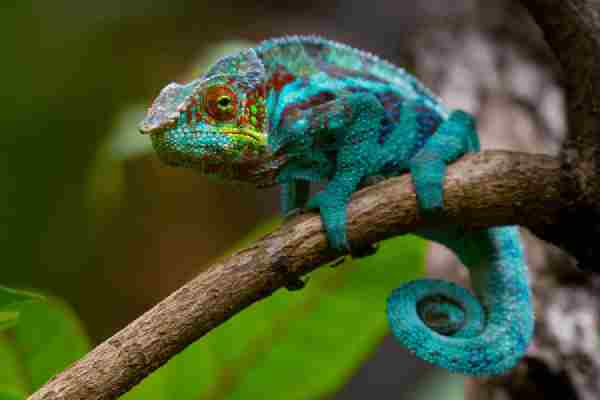
Chameleons, renowned for their astonishing ability to change color, possess equally remarkable tongues. These elongated, sticky appendages are a marvel of nature, sometimes exceeding the length of their entire bodies. Chameleons employ their tongues with incredible speed and precision, shooting them out to considerable lengths in an instant.
Their target? Prey. Insects and other small creatures have little chance to escape the chameleon’s lightning-quick tongue, which can extend and retract in the blink of an eye. This extraordinary adaptation showcases not only their hunting prowess but also the fascinating biomechanics of their specialized tongues.
Giraffes:

Among the most iconic creatures of the African savannah, giraffes boast an unexpected feature—impressively long, bluish-black tongues. Measuring up to 45 cm (18 inches) in length, their tongues play a vital role in reaching the otherwise inaccessible leaves and twigs of tall trees. The unique hue of their tongues is believed to protect them from sunburn as they spend much of their day feeding on vegetation.
Despite their enormous size, giraffes exhibit delicate control over their tongues, delicately plucking foliage from branches. This adaptation underscores their remarkable ability to adapt to their environment and their crucial role in maintaining the balance of their ecosystem.
Lizards:

Lizards, a diverse group of reptiles, often display a fascinating trait—extending and retracting their tongues. The blue-tongued skink, for instance, is named for its striking bright blue tongue, a feature used for multiple purposes. Beyond the eye-catching display, this behavior serves as a defense mechanism, deterring potential predators.
Lizards use their tongues not only for taste but also to gather vital information about their surroundings. The act of sticking out their tongues is a way to explore and perceive their environment, enabling them to navigate, locate prey, and communicate within their habitat. This captivating aspect of lizard behavior sheds light on their sensory adaptations and their survival strategies in diverse ecosystems.
Snakes:

Snakes, fascinating and enigmatic creatures, possess a unique way of perceiving their surroundings—through their tongues. Their tongues play a crucial role in chemoreception, allowing them to sense and gather chemical information from the environment. When a snake sticks out its tongue, it collects scent particles from the air, transferring them to a specialized organ in the roof of its mouth called the Jacobson’s organ or vomeronasal organ.
This process helps snakes “taste” the air, providing valuable insights into their surroundings, including the presence of prey or potential threats. The frequent flicking of their tongues is a distinctive and essential behavior that underscores the vital role of chemosensation in the lives of these intriguing reptiles.
Horses:
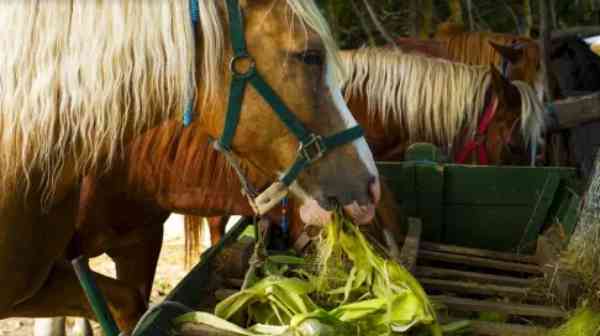
Horses, majestic and revered animals, exhibit behavior that involves sticking out their tongues, often seen during moments of relaxation or grooming. While it may seem like a simple action, a horse sticking out its tongue can convey various meanings. It is a common response during moments of contentment, indicating a sense of ease and comfort.
Additionally, horses may extend their tongues to explore their environment, especially during interactions with objects or when investigating unfamiliar scents. Understanding the nuances of this behavior is crucial for those who work closely with horses, as it provides insights into their emotional state and responses to different situations. The act of a horse sticking out its tongue exemplifies the complexity of equine communication and the subtle ways in which they express themselves.
Dogs:

Dogs, cherished companions, and loyal friends, often display the endearing behavior of sticking out their tongues. This action is a multifaceted expression that serves various purposes, primarily related to their well-being and communication. Dogs use panting, which involves sticking out their tongues, as a mechanism to regulate their body temperature and cool down, especially during warm weather or after physical activity.
Additionally, a dog may stick out its tongue to convey relaxation or contentment, reflecting a state of ease and happiness. This behavior can also be seen during playful moments, showcasing their joyful and exuberant nature. Understanding the different contexts in which dogs exhibit this behavior enhances our comprehension of their needs, emotions, and interactions with the world around them.
Cats:

Cats, known for their grace and enigmatic behaviors, occasionally display the charming action of sticking out their tongues. While not as frequent or pronounced as in some other animals, a cat extending its tongue can signify various states and reactions. Cats might protrude their tongues briefly during grooming, a common feline behavior that aids in cleaning and maintaining their coats.
It can also be seen after eating or during moments of relaxation, representing a sense of satisfaction and comfort. Though relatively subtle, this behavior offers glimpses into a cat’s well-being and contentment. Understanding when and why cats stick out their tongues contributes to our comprehension of their intricate behaviors and their unique ways of communicating their feelings.
Anteaters:

Anteaters, intriguing mammals adapted for a specialized diet, possess exceptional tongues perfectly suited for their unique lifestyle. These elongated, tube-like tongues, often longer than the anteaters’ skulls, play a central role in their quest for sustenance. Anteaters employ their tongues to extract ants, termites, and other insects from nests and tunnels.
The tongue’s surface is coated with sticky saliva that adheres to the prey, allowing for efficient consumption. The rapid and precise extension of their tongues enables them to capture large quantities of insects swiftly. This distinctive adaptation exemplifies the fascinating ways in which animals have evolved to adapt to their dietary requirements and thrive in specific ecological niches.
Frogs:
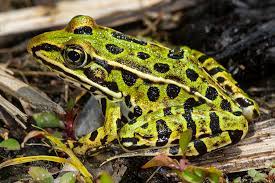
Frogs, amphibians known for their diverse appearances and unique lifestyles, possess a notable feature—an extendable, adhesive tongue. Their tongues are designed for catching prey, primarily insects and other small creatures. When a frog spots potential prey, it rapidly extends its tongue, which is coated with a sticky substance, to capture and secure the target.
This lightning-quick action is crucial for successful hunting, enabling frogs to secure food with astonishing precision and speed. The frog’s tongue, a remarkable example of evolutionary adaptation, underscores their efficient feeding strategies and their vital role within various ecosystems. Understanding the mechanics and functionality of frog tongues provides valuable insights into the fascinating world of amphibians and their diverse array of survival techniques.
Bears:
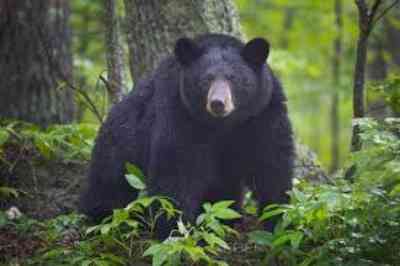
Bears, impressive and formidable creatures that roam various parts of the world, possess a trait that may surprise some—a habit of occasionally sticking out their tongues. While not as prominent or intentional as in certain other animals, bears may extend their tongues during moments of relaxation, grooming, or exploration.
This behavior is often seen as bears use their tongues to explore scents in their surroundings, contributing to their keen sense of smell. Additionally, bears may stick out their tongues during grooming sessions, a natural and essential activity that helps them maintain cleanliness and comfort. Although relatively subtle, this behavior offers a glimpse into the daily habits and interactions of these iconic mammals, adding to our understanding of their fascinating behaviors and adaptations.
Communicative Expressions Through Tongues:
Tongues serve as a non-verbal mode of communication in the animal world, conveying a range of emotions and intentions. Dogs, for instance, use their tongues to exhibit affection by licking their owners, showcasing a bond and desire for closeness. Additionally, a snake’s flickering tongue is a sensory tool, allowing it to collect information about its surroundings and potential prey.
Furthermore, primates like lemurs and gorillas often use tongue displays as social signals to communicate submission, aggression, or even playfulness within their groups. This non-verbal language of tongues adds another layer to the rich tapestry of communication within the animal kingdom, illustrating the nuanced ways in which creatures express themselves without words.
Evolutionary and Biological Aspects:
The evolution of tongues showcases a remarkable journey shaped by the diverse needs of animals over millennia. From simple protrusions in early jawed fish to the complex, highly adaptable tongues found in mammals and reptiles today, the evolutionary path of tongues has been a story of continuous refinement and specialization. Different species have evolved unique tongue structures and functions based on their dietary preferences, environmental conditions, and survival strategies.
The development of taste buds, varying lengths, shapes, and textures of tongues, and the emergence of specialized adaptations like the brush-like papillae in cats demonstrate the biological marvel of this seemingly humble organ. Studying the evolutionary and biological aspects of tongues provides valuable insights into the intricacies of animal life and the fascinating ways in which organisms adapt to their environments.
Final Words:
Animals sticking their tongues out are not merely playful gestures; they are windows into a world of biological adaptation, communication, and evolutionary history. From the mesmerizing precision of a chameleon’s strike to the tender licks of a pet dog, each instance of a tongue in action reveals the incredible diversity and ingenuity of nature.
Understanding the significance of tongues in the animal kingdom offers us a deeper appreciation for the beauty and complexity of life on Earth. It is a reminder of the boundless wonders that unfold when we observe and celebrate the quirks and expressions of the creatures that share our world.
Reference:
- https://www.pashudhanpraharee.com/tongue-rolling-orosthenic-syndrome-in-cattlefield-reviews-management/
- https://www.psychologytoday.com/us/blog/evolution-the-self/201509/what-does-it-mean-when-we-stick-our-tongues-ou
- https://www.snexplores.org/article/copycat-monkeys

Zahra Makda
Growing up enjoying the beauty of my village, a good passion for nature developed in me from childhood. Following my passion for the natural world, I have chosen zoology for my graduation, during my undergraduate degree, I participated in many nature trails, bird watching, rescues, training for wildlife conservation, workshop, and seminars on biodiversity. I have a keen interest in invertebrate biology, herpetology, and ornithology. Primary interests include studies on taxonomy, ecology, habitat and behavior.

